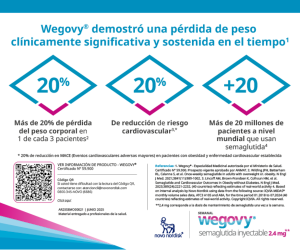Nutritional education as a priority approach for postprandial glycemic control
DOI:
https://doi.org/10.47196/diab.v58i2.796Keywords:
nutritional education, approach, postprandial glycemic controlAbstract
Nutritional therapy and education are indisputable pillars of diabetes treatment. Together under the concept of “nutritional education”, taught by professionals specialized in the subject, they provide a fundamental tool for achieving therapeutic objectives and, simultaneously, constitute a prevention strategy not only of complications of the disease, but also to avoid acquisition of harmful eating patterns that complicate the achievement of the proposed objectives.
For years, low glycemic variability has been one of the therapeutic targets given that the characteristics of post-glycemic excursions are predictors of the development and progression of chronic complications of the disease. In this sense, the postprandial periods are a focus of attention.
References
I. Temelkova-Kurktschiev TS, Koehler C, Henkel E, Leonhardt W, Fuecker K, Hanefeld M. Postchallenge plasma glucose and glycemic spikes are more strongly associated with atherosclerosis than fasting glucose or HbA1c level. Diabetes Care 2000;23(12):1830-4. doi: 10.2337/diacare.23.12.1830.
II. Bao J, Gilbertson HR, Gray R, Munns D, Howard G, Petocz P, Colagiuri S, Brand-Miller JC. Improving the estimation of mealtime insulin dose in adults with type 1 diabetes: the Normal Insulin Demand for Dose Adjustment (NIDDA) study. Diabetes Care 2011;34(10):2146-51. doi: 10.2337/dc11-0567.
III. Freeman J, Lyons L. The use of continuous glucose monitoring to evaluate the glycemic response to food. Diabetes Spectr 2008; 21 (2):134-137. doi: 10.2337/diaspect.21.2.134.
IV. Hooper J. Beyond insulin to carb ratio. The impact of dietary fat and protein on postprandial glycemia and implications for mealtime dosing in patients with type 1 diabetes. UNC 2019. doi: https://doi.org/10.17615/rs4s-4x46.
V. Evert AB. Factors beyond carbohydrate to consider when determining mealtime insulin doses: protein, fat, timing, and technology. Diabetes Spectr 2020;33(2):149-155. doi: 10.2337/ds20- 0004.
VI. Kaya N, Kurtoğlu S, Gökmen Özel H. Does meal-time insulin dosing based on fat-protein counting give positive results in postprandial glycaemic profile after a high protein-fat meal in adolescents with type 1 diabetes: a randomised controlled trial. J Hum Nutr Diet 2020;33(3):396-403. doi: 10.1111/jhn.12711.
VII. Bell KJ, Smart CE, Steil GM, Brand-Miller JC, King B, Wolpert HA. Impact of fat, protein, and glycemic index on postprandial glucose control in type 1 diabetes: implications for intensive diabetes management in the continuous glucose monitoring era. Diabetes Care 2015;38(6):1008-15. doi: 10.2337/dc15-0100.
VIII. Krebs J, et al. The effect of additional mealtime insulin bolus using an insulin-to-protein ratio compared to usual carbohydrate counting on postprandial glucose in those with type 1 diabetes who usually follow a carbohydrate-restricted diet: A randomized cross-over trial. Diabetes, Obesity and Metabolism 2018;20(10):2486-2489.
IX. Paterson MA, et al. Impact of dietary protein on postprandial glycaemic control and insulin requirements in type 1 diabetes: a systematic review. Diabetic Medicine 2019; 36(12):1585-1599.
X. Presner N, González Infantino C. Impacto de las proteínas, las grasas y la fibra sobre la glucemia posprandial tardía en personas con diabetes mellitus tipo 1. Rev Soc Arg Diab 2024;58(2):46-56.
Downloads
Published
Issue
Section
License
Copyright (c) 2024 Sociedad Argentina de Diabetes Asociación Civil

This work is licensed under a Creative Commons Attribution-NonCommercial-NoDerivatives 4.0 International License.
Dirección Nacional de Derecho de Autor, Exp. N° 5.333.129. Instituto Nacional de la Propiedad Industrial, Marca «Revista de la Sociedad Argentina de Diabetes - Asociación Civil» N° de concesión 2.605.405 y N° de disposición 1.404/13.
La Revista de la SAD está licenciada bajo Licencia Creative Commons Atribución – No Comercial – Sin Obra Derivada 4.0 Internacional.
Por otra parte, la Revista SAD permite que los autores mantengan los derechos de autor sin restricciones.




























